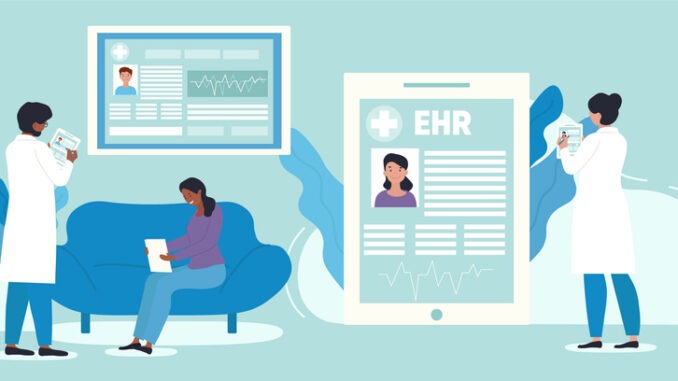
Understanding the total workload of general practice is vital for planning, research and supporting practices under pressure
CREDIT: This is an edited version of an article that originally appeared on The Health Foundation
GP appointments data
Since 2018 the NHS digital appointments in general practice dataset has been an important source of activity data for general practice in England; it is designed to provide a minimum level of information on appointments. NHS digital classify it as ‘experimental’, to indicate current quality challenges, but the introduction of this dataset represents a major step forward in publicly available activity data for general practice.
What the GP appointments data can and can’t tell us
The NHS digital appointments in general practice dataset is often treated as though it captures all the kinds of work taking place in general practice, and that the data are complete. However, there are three important limitations to bear in mind – scope, quality and detail.
Scope of the data
Patient appointments are just one part of the activity that goes on in general practice. A lot of other essential work is done by GPs and their teams to support patients and the practice itself. This work includes:
- clinical supervision of staff providing direct care to patients by GPs and other senior clinicians (to ensure quality and safety of care);
- admin and clerical work, such as registering new patients, managing the practice business, providing fit notes and reporting against quality indicators;
- reviewing repeat prescriptions to make sure they are correct and appropriate;
- teaching, training and learning for all members of the practice;
- liaising with other parts of the health and care system, including patient referrals, advocacy and communicating with hospital specialists about patient care;
- management and organisation of their primary care network.
Quality of the data
The appointments dataset is based on data collected from practice IT systems, which are used by GPs for managing their patient appointments and records. They are designed for practical use by GPs in managing their day-to-day work, so different practices fill in their records in different ways; this means the data they contain vary in completeness and quality.
Most of these systems rely on GPs and other staff manually ‘coding’ and classifying the data they enter; this includes manually changing the appointment type in the IT system from the default settings every time. If this isn’t done consistently, the data collected become inaccurate, and the dataset struggles to capture appointments which tend to be recorded outside of core GP systems.
There are also different suppliers of GP IT systems. Differences in the way these systems store and structure the data they hold adds further variability to the data that practices provide.
Detail of the data
As patient data aren’t provided to NHS Digital, the appointments dataset lacks information on patient demographics, or what each appointment is for. This means we can’t see, for example, the age breakdown for patients receiving face-to-face vs remote appointments.
Similarly, because of variability in the way practices use their appointments systems, the quality of information about which staff groups are providing appointments is poor. The dataset is unable to break down the number of appointments provided by different staff groups apart from providing GP and non-GP categories.
CPRD activity data
Other data sources can give insights into general practice activity. One example is the clinical practice research datalink (CPRD) dataset. CPRD collects anonymised patient data from a network of GP practices across the UK. It covers around 2,000 practices and 16 million current patients. Data from this sample of practices have advantages over the NHS digital appointments in the general practice dataset.
CPRD data give greater detail about activity and a longer time series, including for appointments; this allows us to explore specific questions, such as how the mode of delivery for appointments has varied for patients of different ages, or by staff groups providing them.
Referral activity
Alongside appointments, there are other indicators that can help paint a picture of activity in general practice. Referrals are a good example; these are where a GP or another member of the practice team arranges for a patient to receive assessment or treatment by another service – for example, hospital-based specialists or community support.
Other parts of the health system make similar referrals to the same services. This sometimes means data are reported in an aggregate way that obscures the number of referrals from general practice. Exceptions are urgent cancer referrals and referrals to first consultant-led outpatient appointments. These do have data specific to general practice and can show us another part of GP activity.
Other sources of activity data
While appointments and referrals data are the best overall indicators currently available for GP activity, there are others. These include routinely collected information such as general practice prescribing data, or other proxies such as self-reported GP workload.
Upcoming analysis from the improvement analytics unit will draw on data from providers of digital tools to general practice to describe activity. These tools enable patients to book and receive appointments online as part of digital first primary care.
Workforce
The amount of activity general practice can deliver depends on the staff available and the number of staff available limits what activity can be delivered in general practice. GP appointment numbers are now higher than they were pre-pandemic, but the number of permanent fully qualified FTE GPs has fallen since 2015.
Activity in general practice can only be understood by combining a number of different sources. This piece has focused on what the data say about general practice activity at the national level in England; however, local level data are also important for understanding pressure points and highlighting inequities and unwarranted variation. Even then, the picture is still incomplete.
Overall, there is a clear need for improved general practice activity data.


Be the first to comment